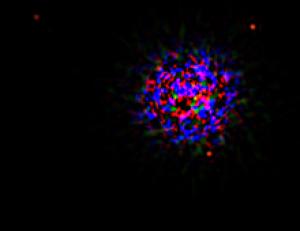
© iStockphoto/Tammy PelusoJacks streaming across a reef in Papua New Guinea. How do fish choose their leader? Researchers studying stickleback fish found school members preferred to follow larger over smaller leaders.
Just after Americans have headed to the polls to elect their next president, a new report in the November 13th issue of
Current Biology, a Cell Press publication, reveals how one species of fish picks its leaders: Most of the time they reach a consensus to go for the more attractive of two candidates.
"It turned out that stickleback fish preferred to follow larger over smaller leaders," said Ashley Ward of Sydney University. "Not only that, but they also preferred fat over thin, healthy over ill, and so on. The part that really caught our eye was that these preferences grew as the group size increased, through some kind of positive social feedback mechanism."
"Their consensus arises through a simple rule," said David Sumpter of Uppsala University. "Some fish spot the best choice early on, although others may make a mistake and go the wrong way. The remaining fish assess how many have gone in particular directions. If the number going in one direction outweighs those going the other way, then the undecided fish follow in the direction of the majority."






